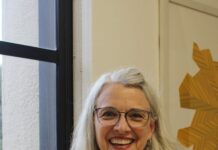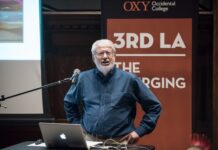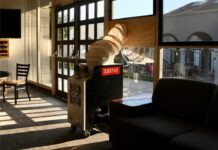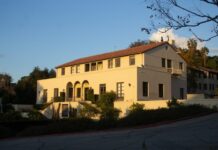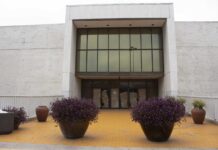Author: Lilliane Ballesteros
Charter schools offer students “alternative educations,” but each charter school offers its own version of what alternative education means.
In essence, charter schools are public schools that work somewhat independently of the school districts in which they reside. In exchange, these schools are given a higher degree of accountability in regards to funding and test scores.
“The basic charter concept is simple: Allow a group of teachers or other would-be educators to apply for permission to open a school,” an article on Education Week’s Charter School Page reads. “Give them dollar-for-dollar what a public school gets for each student. Free them from the bureaucracy that cripples learning and stifles innovation at so many public schools . . . While exempt from most state and local laws and regulations, to gain charter renewal, the schools must prove that their students have gained the educational skills specified in that initial contract.”
Parents, educators and locations are instrumental in deciding what a charter school will teach and how it will function. Some are built around central themes, such as the Social Justice Charter School and Film and Theater Charter School in Los Angeles.
The list of definitions for charter school is a long one, but what is essential in understanding charter schools can be found primarily through the experiences of those involved with this new form of education.
Charter School Board Member Shares His Experience
Occidental’s Chair of the Education Department Ronald Solorzano has spent many years working in education, both as an educator and now as a board member for two charter schools. Solorzano has spent 13 years teaching in Los Angeles-the last five working in a district office for the Los Angeles Unified School District (LAUSD). He currently serves on the Board for two charter schools, New Economics for Women Academy of Science and Arts in downtown Los Angeles and New Economics for Women Canoga Park Elementary in Canoga Park.
Solorzano said the schools are unique because they not only serve as elementary schools, but also offer housing for students from low-income families. The schools are connected to New Economics for Women, an economic development organization that provides housing for women. N.E.W. works with low-income families through programs and workshops to teach about topics like literacy and computer education. One-third of the students attending the charter school in downtown Los Angeles live in the housing development.
In the downtown Los Angeles location, the women are predominantly Latina or African-American. The organization offers women housing as well as counseling, depending on the goals that the residents have. “Some [of the women] want to buy houses,” Solorzano said.
Solorzano described the two schools, saying that N.E.W. Canoga Park Elementary recently built apartments for residents, some having “up to five bedrooms.” The school and housing development are located in the same building. “It’s really amazing,” he said.
Los Angeles’s N.E.W. Academy of Science and Arts enrolls approximately 250 students. Classes for third, fourth and fifth graders are located on the downstairs floor of the housing development, with kindergarten and first-grade classes one block away, something that Solorzano said is temporary until the school finds a new location for the charter school.
Solorzano has been on the charter schools’ board for four to five years and has gone through the “growing pains” that each school has experienced since their respective inceptions. He said running a charter school is especially difficult because of the very thing that makes them unique-their independence from the local school district. While LAUSD has its own human relations and all other necessary departments, charter schools need to create their own infrastructure from the bottom up.
“[LAUSD] has the infrastructure,” he explained. “Charter schools have to do this on their own. We are Human Resources.”
Running a charter school can also be very complex for principals, who are involved with everything from figuring out how to provide lunches for students to helping set the school’s curriculum. School lunches, which are free at the N.E.W. charter schools, are provided by the local school district. Charter school principals figure out the lunch logistics, something that has proven hard for some principals. N.E.W. Academy of Science and Arts has gone through three to four principals in the last three to four years.
“Charter schools are different,” Solorzano said. “They have to provide the whole infrastructure to run the schools.” He said although “the idea of charter schools is to be free of the bureaucracy and pedagogy, the one thing that anchors us down is that we have to build our own bureaucracy.”
Solorzano was adamant about charter schools not being private schools. “Charter schools are public schools,” he said, because the N.E.W. charter schools enroll students from the local neighborhoods.
“It’s the neighborhood’s folks [who] go to the office and apply,” he said. Solorzano also said claims asserting that charter schools only enroll “the best and the brightest” are false and that many students come from poor immigrant families.
Solorzano said there are many reasons for why parents enroll their children in charter schools, but sometimes parents are simply “dissatisfied with the local schools.” One major problem for public schools in local school districts is the overwhelming number of students at each school. LAUSD is the second-largest school district in the country, with close to 750,000 students enrolled in close to 600 elementary, middle and high schools.
In comparison, most charter schools enroll no more than 200 students. There are currently about 160 charter schools in LAUSD, although that number is growing annually. This means that many of students who enroll in charter schools are put on waitlists.
LAUSD and charter schools have often butted heads in regard to the unionization of teachers. As Solorzano said, “charter schools are very political” in different ways, one of those being its stance on teacher unionization. Some charter schools do not require that teachers join a union and will sometimes employ teachers who are not part of the union. He said a “mainstay of unions is seniority,” but that “charter schools have changed this policy by deciding to hire teachers without regard to seniority” and focusing their hiring to “match the teacher to the goal of the charter school.” All of the teachers in N.E.W. schools are unionized.
Solorzano was part of a union during his 13 years as a teacher in LAUSD, but said he often disagreed with the union over bilingual teaching and incorporating Spanish in the curriculum. He acknowledged the importance of unions, but said there are some things that he feels needed to change. “The teacher unions also have bureaucracy,” he said.
He talked about the teachers’ unions and their “must place” basis, which forces teachers with seniority to be placed in a teaching position, leading to a lot of teachers who don’t want to be teaching in the intercity schools. “Due process is another important issue for unions,” he said.
While teaching under the LAUSD guidelines, teachers must stick to the LAUSD curriculum, something that Solorzano thinks is stifling for teachers, especially young teachers just out of college. “We’re training teachers here at Oxy to teach kids, to empower kids,” he said, adding that at charter schools, teachers are given the opportunity to teach classes in different languages and play a larger part in the curriculum they plan to teach.
Charter schools also have smaller classes. N.E.W. school in downtown LA employs nine teachers for its 250 students. This is another reason why some teachers have decided to leave the union and teach at charter schools. “Some people feel that unions prohibit reform,” Solorzano said.
Teacher unionization has been a conflict betwe
en LAUSD and charter schools in Los Angeles for some time. “The [district schools] are feeling that they need to compete with charter schools,” Solorzano said. “There’s just an inherent conflict.” Solorzano said the school district is struggling against these new schools, as some high schools are petitioning to leave the district and become charter schools and Los Angeles Mayor Antonio Villaraigosa is taking over parts of the district and initiating the process for some schools to become charter schools.
“One reason why [charter schools] are so popular is that they are anti-bureaucratic,” Solorzano said, explaining that the district’s bureaucracy often hinders the education of students.
One example of this problematic bureacracy is Prop 227, which was passed in 1998 and states that all public instruction must be taught in English. “Because of Prop 227, school districts don’t teach any other language but English,” Solorzano said. The problem is that students who do not speak English at home get lost in the school system because teachers cannot properly communicate with them and get them back on track.
“Charter schools can have bilingual programs. They can teach in different ways,” Solorzano said. “That’s the lure.”
Charter schools try to alleviate this problem by allowing teachers to communicate with their students in other languages and allowing students to embrace their own cultures while still following the state’s educational requirements for graduation.
Solorzano addressed the question of whether charter schools and LAUSD could work together, saying that in some cases they could but in others they could not.
“Charter schools are a reaction to the school system,” he said, saying that this is a major reason for contention.
Occidental College Student Attends First Green Dot High School
For students attending charter schools, the experience can be rewarding and often exciting. However, these feelings are combined with a sense of the unknown and a tinge of unease as students witness the successes and failures of the schools from a firsthand perspective. Sergio Arteaga (senior) is a DWA major and attended the first Green Dot Charter School in Los Angeles, Ánimo Leadership Charter High School in Inglewood.
Green Dot has proven to be instrumental in the current LAUSD transformation. According to the Green Dot website, “Green Dot Public Schools was founded in 1999 by Steve Barr in direct response to the terrible state of public high schools in the Los Angeles area.” Green Dot public schools are small charter high schools that serve as an alternative to LAUSD high schools. Enrollment numbers are usually no higher than 200.
Over the past nine years, Green Dot has opened 12 high schools that function according to the Green Dot model. “Green Dot’s work is directly focused on influencing Los Angeles Unified School District (LAUSD) to transform its failing high schools into clusters of small successful schools and helping the district reinvent itself as one of the best school districts in the country,” the Green Dot website reads.
The idea of putting a charter school in Arteaga’s neighborhood was presented to parents by Steve Barr. “He had a principle and an idea,” Arteaga said.
Barr founded Green Dot and also serves as a State Board of Education appointee to the Advisory Commission on Charter Schools. In 1990, Barr co-founded Rock the Vote, an organization that encouraged 18- to 24-year-olds to vote in response to slumping youth turnout numbers at the election polls. In addition, he supervised an Americorps after-school program project in South Central and East Los Angeles, an organization that worked with single mothers to get off welfare.
Arteaga was part of the first class to go through the Green Dot system and explained that “it was desperation more than anything” that motivated his parents to enroll him in Ánimo Leadership. He said the alternative high schools available had some of the worst reputations in the city.
Ánimo Leadership originally enrolled 100 students, but because of a higher than expected number of applicants, the enrollment was raised to 140 students. The school has since grown to 540 students, although this number does not make it any easier for those students who apply and are not accepted.
“It is sad because the school cannot accommodate all students,” Arteaga said. Students filled out applications in order to be accepted to the school and a lottery-style process was then used to choose who would attend. Arteaga saw some students cry when they were not chosen.
For those who were accepted, the adventure of being Green Dot class proved fulfilling and challenging. Although there was a lack of extracurricular activities when he started attending Ánimo Leadership, Arteaga said students were encouraged to start their own extracurricular activities. By the third month, the school offered several sports.
One major problem for most charter schools is location. Ánimo Leadership was no different. Arteaga said the school leased space from the University of West Los Angeles, where the entire campus consisted of one floor of the building. The school eventually expanded to a building across the street and added bungalows, but Arteaga remembers when the school “had no library, student lounges-nothing that a normal high school had.”
What the school lacked in resources, it made up for in graduation rates. Arteaga said 98 percent of his class graduated, with only one person dropping out. He said that close to 95 percent of his class went on to higher education, while 76 percent of that class got accepted to four-year universities.
There was a great deal of pressure for Arteaga’s class to succeed, saying, “If we didn’t succeed, that would give justification to say that [the charter school] wasn’t working,” something neither parents nor students wanted.
Parents were an integral part of the learning process and were required to volunteer 30 hours at the school every year. Arteaga appreciated parent involvement, saying, “I enjoyed the community aspect.”
Like every charter school, Ánimo Leadership strives to reflect the community surrounding its campus. “The charter school reflected the neighborhood,” Arteaga said, as 97-98 percent of the student body was comprised of Latino students.
He mentioned undocumented students, saying he felt that “Green Dot did a hell of a job. They went out of their way to raise money for undocumented students” to go to college.
Charter School Visits
Imagine a high school where classes are referred to as advisory groups, the curriculum is based on students’ interests and each week ends by singing a Friday song.
Ánimo Film & Theater Arts Charter High School in downtown Los Angeles is a charter school that offers all of the above. The school enrolls about 120 students and students attend classes three days a week, working at internships during the other two days. The school “tries to cater to [the students’] needs,” Ánimo Principal Steve Bachrach said.
Students are currently interning at a variety of locations, including an architecture firm, a hospital and an AIDS clinics. The school believes in learning through internship experiences, something that is emphasized in the Big Picture Model that Ánimo uses.
Big Picture Model high schools are student-centered high schools. Preparation for the first Big Picture Model School started in Rhode Island in 1995. Since then, these schools have sprung up all over the country, including locations in San Francisco, San Diego and Sacramento. Ánimo is the first school in Los Angeles to follow the model.
Ánimo Film and Theater is unique in that it combines the Big Picture Model with the Green Dot charter school qualities. Students must wear uniforms (every Green Dot charter school requires students to wear uniforms). However, this high school is different. The curriculum centers on certain themes and studen
ts seem much more in control of what they are learning.
Today, the tenth graders are gone, visiting the Los Angeles River to study the ecosystem that exists there. The eleventh graders are learning about nature in connection to humanity and are reading works by Henry David Thoreau. The ninth graders are planning their curriculum around their interests. One student talked about how she is volunteering at a local art gallery, where she is helping with an art auction.
Ánimo Film and Theater has yet to produce test scores and do not have a senior class. However, Bachrach said the school outperformed other local schools in academic results and that the school is really trying to “keep a good spirit.”
Five miles away, housed in the World Trade Center building on Figueroa Street in downtown Los Angeles, Assistant Principal of Oscar de La Hoya Ánimo Charter High School Harris Luu described the school’s goals, saying, “We like to give hope.”
He said “lots of kids fell through the cracks,” referring to the high schools in Boyle Heights, which is where Oscar de La Hoya Ánimo will eventually be located. The school has been in the World Trade Center building for the last two years. Just like most other charter schools, this high school is waiting for their final location to be set and must rent out spaces wherever they can until then. Bachrach said charter schools spend most of their money in rent. Luu said that Oscar de La Hoya Ánimo school pays $60,000 in rent a year.
Although classes here are closer to the curriculum found at LAUSD schools, there is still a sense that the education taught here is different from most public schools. Ninth graders, for example, take computer classes where they practice typing. The high school also focuses on the advantages that the students have, such as Spanish speaking skills. Luu said students here have outperformed other schools in Spanish AP scores.
“[The students] come in with all kinds of experiences,” Luu said. “We want to tell them we can use them.”
Although there are obvious disadvantages to this charter school-a lack of administrative foundation has lead to parents waiting for hours to talk to principals and a lack of space results in limited opportunities for students to play sports -Luu was optimistic. “The progress we make outweighs the hiccups,” he said.
Occidental’s own connection to local charter schools has developed through the Northeast Education Strategy Group, which partners a group of district and charter schools with Oxy professors and students. Center for Community Based Learning Assistant Director Alexis Moreno emphasized the importance of this partnership, saying, “We have built the network very carefully.” She noted that the partnership is more “organic” because students find out what works for them when working with the schools. “In this area there is a tremendous variety of curriculum and models of education,” she said.
The CCBL works with such local charter schools as California Academy for Liberal Studies (CALS) Middle School, Academia Avance Middle School and Renaissance Academy Middle School, which is one of the best performing schools in the area.
Los Angeles is a transforming city where a vision for a better educational system is being implemented. Charter schools are proving, if nothing else, that there are parents, educators, administrators and, most importantly, students who are still willing to put in the time and effort needed for the educational system to succeed.
This article has been archived, for more requests please contact us via the support system.
![]()





